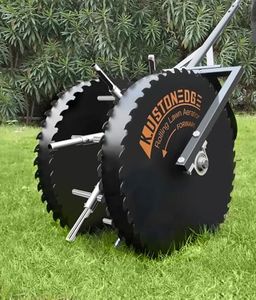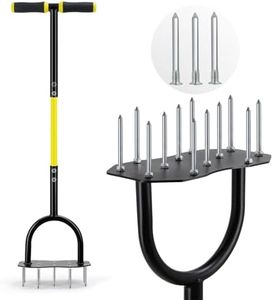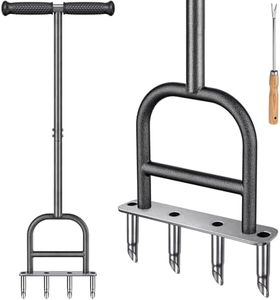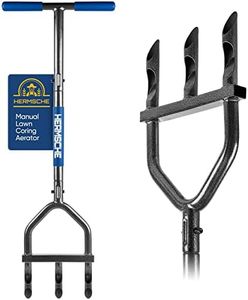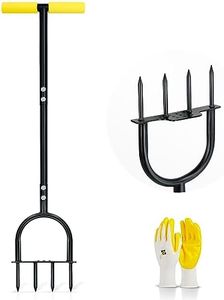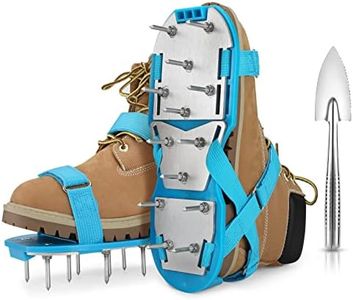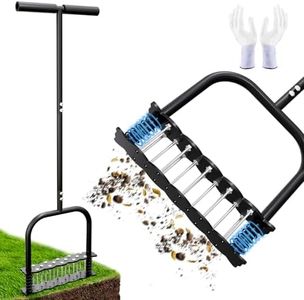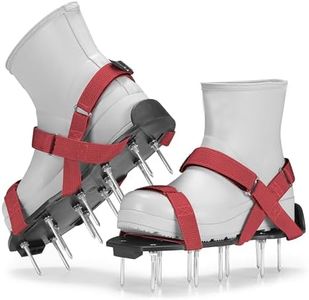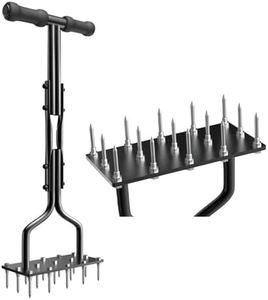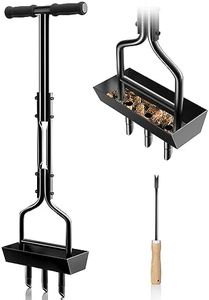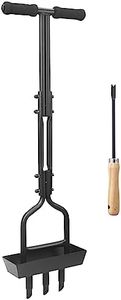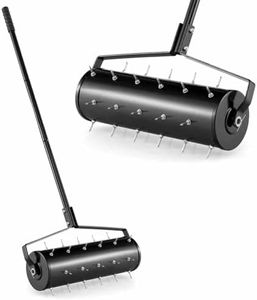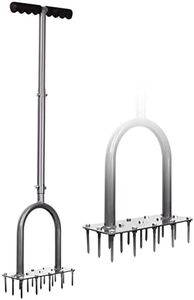We Use CookiesWe use cookies to enhance the security, performance,
functionality and for analytical and promotional activities. By continuing to browse this site you
are agreeing to our privacy policy
10 Best Manual Lawn Aerators
From leading brands and best sellers available on the web.Buying Guide for the Best Manual Lawn Aerators
Choosing a manual lawn aerator might seem simple, but making the right choice will depend on understanding how different features affect ease of use and the results you'll get on your lawn. Think about your lawn size, the type of soil you have, and how comfortable you are with a physically demanding job. Durable build, comfortable handling, and the type of aeration (spikes, cores/plugs) will play a big part in how efficiently you can improve your lawn's health. Remember, an aerator should be suited not just to your yard, but also to your own ability and preference for lawn care.Type of AerationManual lawn aerators come mainly in two types: spike aerators and plug (or core) aerators. Spike aerators push holes into the ground, while plug aerators remove plugs of soil to create deeper channels for water and nutrients. Spikes are easier to push but don’t alleviate soil compaction as well as plug types. Plug aerators, though tougher to use, are more effective for dense or clay-heavy soils. If your lawn has heavy compaction or clay soil, opt for a plug aerator; for well-aerated, lighter soil, spike aerators may be enough.
Working WidthWorking width refers to how much ground the aerator covers in one pass. Narrower models mean more passes for the same area but offer better maneuverability, especially in tight spaces or small yards. Wider models cover more area per pass, reducing overall work for large, open lawns but can be harder to control or push. Match the width to your lawn size and layout—choose wider for big, open lawns and narrower for small or irregular spaces.
Tine or Spike LengthThe depth at which the tines or spikes penetrate the soil is crucial for how well the aeration works. Shorter tines (less than 2 inches) work best for minor aeration needs or shallow root grass types. Longer tines (up to 4 inches or more) are needed for compacted or deep-root lawns. If your soil is dense or your grass roots grow deep, look for an aerator with longer tines; if your soil is softer or only needs occasional maintenance, shorter tines are easier to handle.
Handle or Foot Lever DesignThe comfort and effectiveness of the tool are hugely influenced by how you interact with it—typically by pushing, stepping, or rolling it. Some aerators have long handles for standing use, while others may have foot platforms for adding extra force. A good grip and height-appropriate handle reduce fatigue during long jobs. Select a design that matches your physical comfort and strength, and make sure it feels natural for your height and intended use duration.
Build Quality and MaterialsSince aerating can put a lot of strain on a tool, solid construction and rust-resistant materials like steel are important for long life. Plastic parts or thin metal can bend or break easily, especially in tough soil. If you expect to use the aerator frequently or on challenging terrain, prioritize more robust materials; for occasional, light use on soft lawns, lighter builds may suffice.
Ease of CleaningAerators can collect soil, roots, and debris during use. Some designs have fewer crevices or removable parts for easy cleaning, which helps prevent rust and prolongs tool life. If you want to minimize cleaning hassles, look for simple, open designs that let you remove soil quickly after each session.
